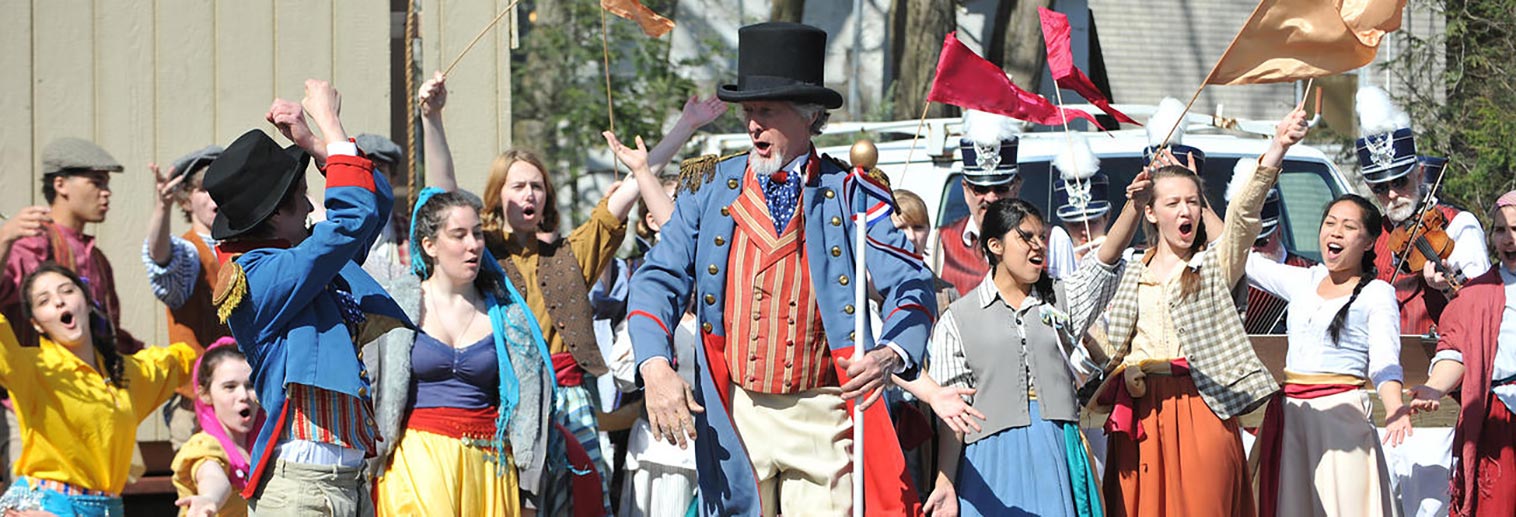
History of Theatre at Moravian
With two hundred thirty-some years of tradition, today Theatre at Moravian University includes opportunities for students to major or minor in Theatre, to participate as a co-curricular activity, to work with the community on large scale theatre projects, and to bridge to the profession with the University's affiliated professional ensemble company Touchstone Theatre, where undergraduate students can intern, and where graduate students can earn a Masters of Fine Arts degree in Performance Creation.
The following summary of the long history of Theatre at Moravian was written by Emily Kave (’24) with research assistance by archivist Cory Dieterly:
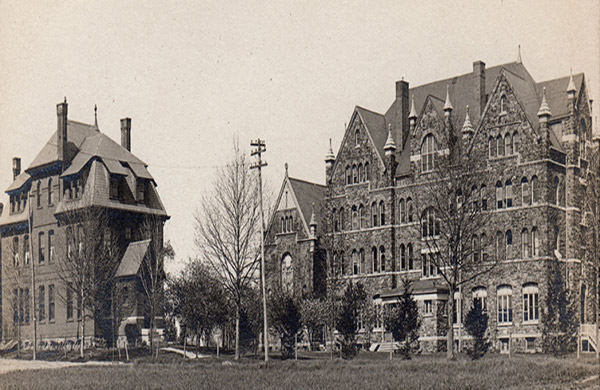
On May 4th, 1742, 16 year old Benigna von Zinzendorf founded a boarding school for young girls on what is now known as Moravian’s south campus. This school would later be officially established and renamed the Moravian Seminary for Young Ladies in 1785. This was where theater first took form at Moravian. Starting in 1789, two shows called “Rural Life”, a play that was written by Sister Susan E. Langaard, a professor at the Seminary from 1785-1792, and “The Shepherdess” were performed annually at the college.1 This would continue for decades before they would expand their line-up later on. Then, in 1898, the Seminary would implement an Expression Department in their Fine Arts School, which was dedicated to teaching and educating students about the various aspects of theater.2 This was the first iteration of what is now known today as the Theater Program at Moravian.
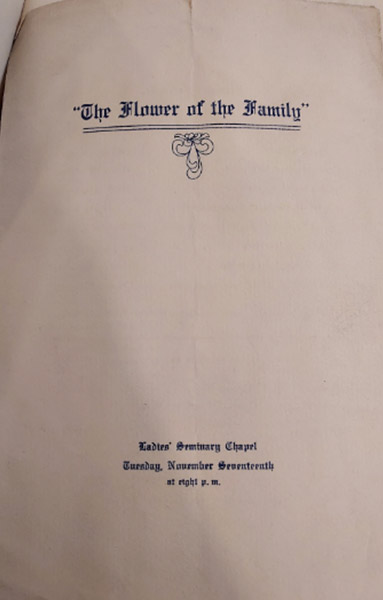
Jumping ahead to the early 1900s, a 1922 yearbook held in the Moravian University Archives discusses the first student-initiated theater club. It was created at the men’s college, known as the Moravian College and Theological Seminary, in 1908 by a group of students looking to raise funds for a gymnasium that the college was planning to build for its athletic program. They called themselves the Moravian College Dramatic Association. Later on in 1928, they would change it to the Moravian College Footlights Club in reference to the row of spotlights along the front of the stage called footlights that were used in theaters during this time. Their first ever play, called The Flower of the Family, was performed at the Seminary and College for Women on Church Street. This production was so successful that the company went on to do annual performances for the college, incorporating a combination of plays and musical performances. The proceeds that came from these productions continued to be given to the Athletic Association to assist with other financial needs. However, members of the company made it clear that this was not the sole reason for the continuation of the Moravian College Drama Association. According to the 1922 yearbook, members of the club believed that “a play should not be presented solely for the purpose of raising needed funds but also because of the histrionic value of the work” (pp. 22). This ideology is what allowed the theater company to grow and develop in the coming decades, putting on other successful shows such as Esmeralda, The Private Secretary, and The Passing of the Third Floor Back.3
In the mid-1920s, women from the Expression Department of Moravian Seminary and College for Women would assist the Footlights Club by performing in some of their productions. Notable performances included the 1925 production of Turn to the Right, where several seminary students took on challenging female roles and made the show one of the best audience members had ever seen.4 This would continue through the 1930s and 1940s, and performances would be held frequently at both locations. During this same period of time, the women’s campus theater company, known back then as The Players, were putting on their own productions, such as A Lucky Break by Zelda Sears. They also enjoyed putting on a Shakespeare play at the end of every school year, including some of his most popular works like A Midsummer Night’s Dream. In 1939, they would change their name to The Little Theatre Group, debuting this new name with Jane Austen’s Pride and Prejudice.5
In 1950, the men's college theater company changed their name once again. By this time, footlights were no longer used in theaters, and members of the company decided to take on a new name as a result. They settled on calling themselves the Blackfriars in reference to the Blackfriars Playhouse where William Shakespeare and his company famously performed many of his plays.6 Then in 1955, the men’s and women’s campuses combined, and with this came the merging of the men’s and women’s theater companies. However, this also resulted in the disappearance of the Expression Department that was present on the women’s campus, as curricular opportunities to explore theater quickly faded away after the merger of the two colleges. An option to engage in theater as a course of study would not reappear until 1993 as a track for English majors to pursue. They would continue to call themselves the Blackfriars and would stick with the name for the next thirty years. Throughout the decades, a number of directors would come and go, leaving their own marks on the company.
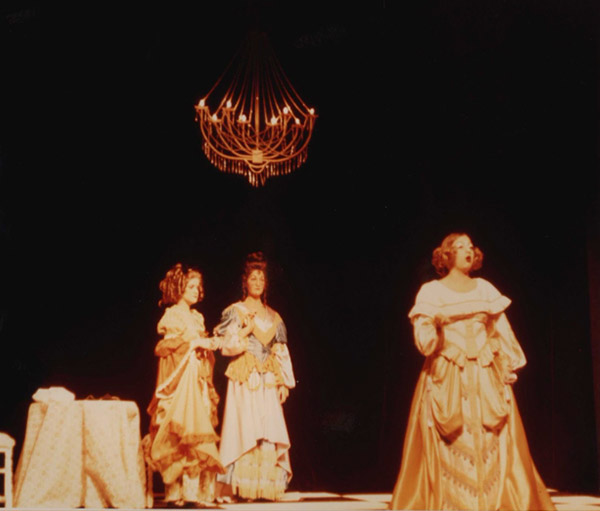
Professor Jack Ramsey then took over as the director of the Blackfriars in 1970. He had a bright and particularly active future in mind for the members of the theater company. While he was primarily an English professor at the University, he was extremely involved in theater-related activities, events, and education on campus as well. He even taught classes for the English theater track when it was re-implemented in 1993. In addition to all of this, he also made it a point to work towards expanding theater to other parts of the Lehigh Valley. For example, he attempted to incorporate a theater program with the Bethlehem Area School District, specifically focusing on nearby Freedom High School. Thinking beyond the school year, he even created a Summer Theater Camp with the Pennsylvania Youth Theater, founded and run by his wife, Madeleine Ramsey, and Freedom High School.7 In July of 1974, he went further by implementing a Summer Dinner Theater program. This involved the Blackfriars putting on a production of the show, “Dirty Work at the Crossroads” for audience members from across the Lehigh Valley in the HUB dining room, which had been converted into a makeshift theater for the event. Though it was a massive undertaking and Professor Ramsey himself was not sure how the event would go, it was fortunately a success and became an annual event that he continued during his time at Moravian.8 Even with all of the positive impacts he made on theater at Moravian and within the Lehigh Valley, he still faced criticism and backlash, mainly due to the shows he chose for the Blackfriars to perform. Many involved topics that some audience members thought were too mature for college students, as he often chose shows that dealt with ideas that were quite ahead of his time. However, he saw theater as a way to educate and inspire both theater company members and audience members, and he never stopped pushing for theater to be an important aspect at Moravian University and within the Lehigh Valley.
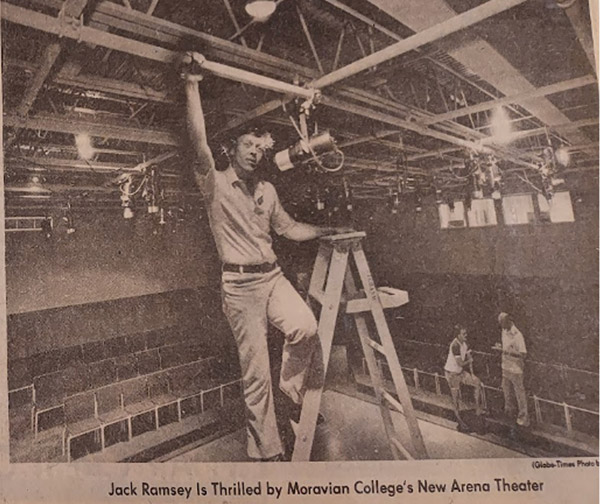
Among the thousands of newspaper clippings collected in the Moravian University Archives, one such article from 1982 talks about the construction of the Arena Theater, which took place during Professor Ramsey’s time at Moravian. It was built with the hope of creating a sort of “theater in the round”, a popular type of theater used in ancient Greece and in the architecture of Shakespeare’s Globe Theater. This type of theater would allow for audience members to sit on every side of the stage and view a performance from multiple angles, creating a more inviting and involved theater experience. With this new addition to the theater company, members finally had a dedicated space where they could hold performances and meetings as well as build and tear down sets as they pleased. Furthermore, it allowed the company to extend the run of their performances, going from just three performances in one weekend in the Prosser
Auditorium to six performances over the course of two weekends. Professor Ramsey valued the Arena Theater for its ability to allow students to have a more intimate relationship with the audience. Because they were so close to those watching the show, they had to perfect their facial expressions, volume control, and even their costume pieces. While this could cause some frustration at times, Professor Ramsey and his students only saw it as an opportunity to create a challenging and educating theater experience for everyone involved. It would also allow students to become closer and work better with each other. In essence, the Arena Theater created a home for the theater company, somewhere where anyone who expressed a love for theater could share it with others and a place where both performers and audiences could immerse themselves in the magic of the performing arts. In 1982, soon after the completion of the construction of the Arena Theater, the Blackfriars would change their name once again, this time to the Moravian College Theater Company, otherwise known as MCTC. 9
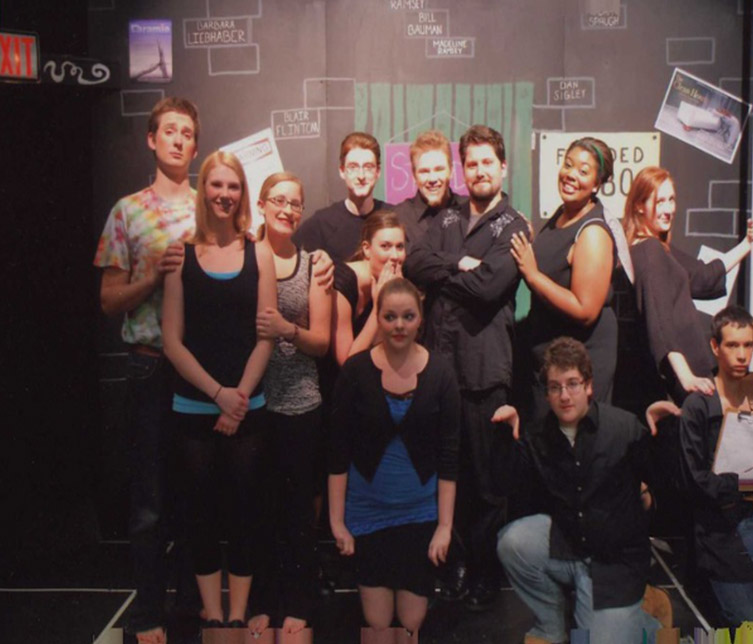
The current director, Professor Christopher Shorr, has run the company since 2008. In his time here so far, he has transformed the company into a more student-run operation, allowing students to stage manage, direct, and even write their own plays for the company. He takes pride in the connections he has made and collaborations he has done with theatrical guests who have held interactive workshops for students at Moravian as well as other theaters in the Lehigh Valley, such as Touchstone Theater. Since the official launch of the Theater Minor at Moravian University in 2017, Professor Shorr has worked extensively with students who wish to pursue this area of study, teaching a number of classes curated specifically to the minor. In 2019, Moravian launched a Master of Fine Arts in Performance Creation, in partnership with Touchstone Theatre. A couple years later in 2021, Moravian would officially gain approval from the Pennsylvania Department of Education to become a university, and with this change, the theater company would change their name once more, thus becoming the Moravian University Theater Company.
Theater at Moravian is a sort of sanctuary for many students, a home away from home. The theater program itself is a tight-knit community, filled with dedicated members who all come from different backgrounds and participate for a multitude of reasons, whether that be to engage in a love for theater or to simply try something new. Successful shows and the excitement of having accomplished something as challenging and exhilarating as a theatrical production create lasting bonds that endure past graduation. Even audience members feel a close connection to the theater company and those within it, often participating in Q&A’s after shows and coming up to performers to congratulate them. In short, the theater program at Moravian and the Moravian University Theater Company continue to be integral parts of the university, still bringing students together as they continue to integrate student involvement and independence.
It is important to note that theater at Moravian includes more than just its history. Its teachings and ideals are fundamentally embedded into the educational foundations that Moravian was built upon. John Amos Comenius, the philosopher and educator on whose philosophy the university’s educational system is based, believed that the best way to learn was to actively do what one was learning about. He saw this sort of active learning as a more beneficial and enjoyable way for one to learn about something new. This way of teaching ties directly to theater and its ways of teaching. Theater is all about doing, whether it is acting out scenes, constructing sets, or putting together costumes. This is especially the case with how theater is currently taught at Moravian, as most of the theater classes involve actively doing all of these activities and more in order to learn how the different aspects of theater work together. Therefore, theater at Moravian is keeping Comenius’ educational philosophy alive, using it to teach students almost 400 years later.
Theater at Moravian University runs deep in the veins of its history. From the founding of the Moravian Female Seminary and Moravian College and Theological Seminary to the official merging of the two colleges and throughout the process of Moravian’s transformation from a college into a university, theater has thrived throughout all eras. Since Sister Susan Langaard introduced her dramas to students in 1789, there has never been a time where theater has not existed at Moravian, making it a staple and a constant for students at the university.
1) Reichel, William C. A History of the Moravian Seminary for Young Ladies: At Bethlehem, Pa. 4th ed., Moravian Seminary for Young Ladies, 1901, pp. 70-71, 221. https://ia800306.us.archive.org/29/items/historyofmoravia00reic/history…
2) “Moravian Seminary and College for Women,” 1898, Catalog Collection A-2: 1855-1905, Folder: Moravian Seminary and College for Women, 1898-99, Moravian University Archives, Reeves Library.; “Moravian College for Women - Moravian Seminary for Girls: Bethlehem, Pennsylvania,” 1916-1917, Catalog Collection A-2: 1916-1927, Folder: Moravian College for Women - Moravian Seminary for Girls, 1916-1917, Moravian University Archives, Reeves Library.
3) Moravian College. Revista. Moravian College, 1922.
4) Moravian College. “Turn to the Right.” The Comenian, vol.35, n.4, January 1926, pgs 13-15.
5) Moravian College and Theological Seminary. Scrapbook, 1907-1934. Theatre Program, MUMTS A-18.1, Scrapbook Collection. Accessed through the Moravian University Archives of Reeves Library, Moravian University, Bethlehem, PA.
6) Britannica, The Editors of Encyclopaedia. "Blackfriars Theatre". Encyclopedia Britannica, 30 Mar. 2020, https://www.britannica.com/topic/Blackfriars-Theatre-London. Accessed 28 May 2023.
7) Moravian College and Theological Seminary. Faculty Report of Professional Activities: Jack Ramsey, 1971-1994. “Specific Report Cited,” MUMTS A-24.4, Academic Affairs Collection. Accessed through the Moravian University Archives of Reeves Library, Moravian University, Bethlehem, PA. Accessed April 17, 2023.
8) Moravian College. “Blackfriars Set To Show Their Talents During Fall Semester.” The Comenian, vol.78, n.1, September 11 1974, pg 2.
9) Hooker-Haring, Christopher. “Arena Theater Brings New Luster to Moravian Dramatic Efforts,” The Moravian, Summer 1982, pp.3-4.
Production Lists
MCTC History - 1970's Productions
| 1970-71 |
|
| 1971-72 | |
| 1972-73 |
|
| 1973-74 |
|
| 1974-75 |
|
| 1975-76 | |
| 1976-77 |
|
| 1977-78 |
|
| 1978-79 |
|
MCTC History - 1980's Productions
| 1979-80 |
|
| 1980-81 | |
| 1981-82 | |
| 1982-83 | |
| 1983-84 | |
| 1984-85 | |
| 1985-86 | |
| 1986-87 | |
| 1987-88 |
|
| 1988-89 |
MCTC History - 1990's Productions
| 1989-90 |
|
| 1990-91 |
|
| 1991-92 |
|
| 1992-93 | |
| 1993-94 |
|
| 1994-95 |
|
| 1995-96 |
|
| 1996-97 |
|
| 1997-98 |
|
| 1998-99 |
|
MCTC History - 2000's Productions
| 1999-00 |
|
| 2000-01 |
|
| 2001-02 |
|
| 2002-03 |
|
| 2003-04 |
|
| 2004-05 | |
| 2005-06 | |
| 2006-07 |
|
| 2007-08 |
|
| 2008-09 |
|
MCTC History - 2010's Productions
| 2009-10 |
|
| 2010-11 |
|
| 2011-12 |
|
| 2012-13 |
|
| 2013-14 |
|
| 2014-15 |
|
| 2015-16 |
|
| 2016-17 |
|
| 2017-18 |
|
| 2018-19 |
|
MCTC History - 2020's Productions
| 2019-20 |
|
| 2020-21 |
|
| 2021-22 |
|
| 2023-23 |
|

